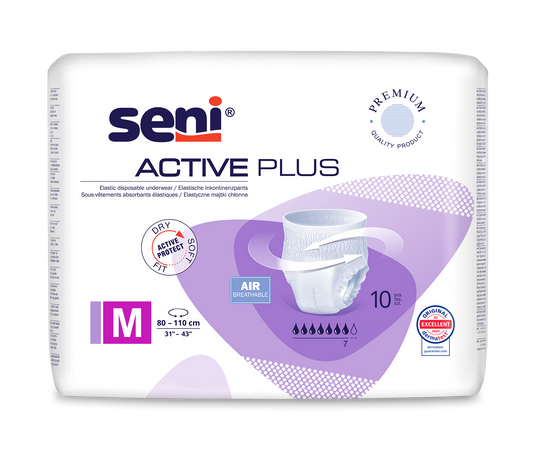
Back pain in the office: causes and tips
Back pain is a widespread problem in the modern world of work. More and more people spend most of their day sitting at the desk, often in a non -optimal positions and without sufficient exercise. These working conditions often lead to tension, incorrect postures and ultimately chronic back pain. In this article, we will look at the main causes of work -related back pain and give practical tips on how to make the workplace ergonomically and prevent back pain through simple measures and exercises.
Causes of work -related back pain in the office
Lack of movement
One of the main causes of back pain is the lack of movement during working hours. If we stay in the same position for a long time, especially when sitting, the muscles become inactive and start to shorten. This leads to a weak back muscles, which can no longer adequately fulfill its stabilizing function, which in turn leads to pain and tension, since the muscles are convulsively attempted to keep the position.
False load
In the office, where heavy lifting is rather rare, wrong loads can be a significant factor for back pain. These often arise from incorrect sitting posture or poor ergonomic equipment. Here are some frequent scenarios that can lead to such a wrong burden:
- Wrong sitting posture: Many office workers tend to lean forward to be closer to the screen or slide down in the chair, which causes an unhealthy curvature of the spine. Such sitting positions not only put a strain on the spine, but also the muscles of the lower back and neck.
- Unfavorable arrangement of the tools: a poorly placed keyboard or mouse can lead to the arms and shoulders to be kept in an unnatural position. For example, if the mouse is too far away, many tend to lift their arm and shoulder, which leads to one -sided stress and muscular tension.
- Cramped work environment: If the workplace is too tight and offers little freedom of movement, this often means that employees have to twist or dislike themselves in unfavorable positions. This can lead to incorrect loads of the spine and muscle tension.
Static attitude
Many people spend hours in static (unchanged) positions, be it sitting or standing. A static attitude leads to an unnatural strain on the spine and the surrounding muscles. Sitting in a curved or forward position in particular can increase the pressure on the intervertebral discs and lead to pain and injuries in the long term.
Set up workplace correctly
The ergonomic design of the workplace is the first step to prevent back pain. Here are some important measures:
Height -adjustable desks
A height -adjustable desk enables you to switch between sitting and standing. This change promotes blood circulation and prevents the muscles from becoming stiff and inflexible. Standing tables promote more dynamic working posture, which can prevent back problems.
Ergonomic office chair
A good office chair should have an adjustable backrest and seat height to adapt to the natural curvature of the spine. An ergonomic chair supports the back and promotes healthy sitting posture by evenly distributing the weight and reducing pressure points.
Set screen height
The monitor should be positioned so that the top line of the screen is at eye level. This prevents you from tilting your head down or stretching your neck, which can lead to tension and pain in the upper back and neck area.
Keyboard and mouse
A wireless keyboard and mouse enable more freedom of movement and flexibility. This promotes natural hand and arm posture and reduces the load on wrists and shoulders.
Correct attitude at the workplace
The change between sitting, standing and movement at work is crucial for health and well -being. Here are the main reasons why this change is so advantageous:
- Avoiding muscle fatigue and tension: If you stay in one position all day, certain muscle groups are constantly stressed, while others are hardly used. By changing the position, different muscle groups are alternately stressed and relieved. This promotes blood circulation and prevents individual muscles from being overloaded or tired.
- Promotion of blood circulation: Regular change between sitting, standing and walking improves blood circulation in the body. Long sitting can affect blood circulation in the legs, which can lead to swollen legs and an increased risk of blood clots. The change of position helps to minimize these risks.
- Reduction of back and neck pain: Longer removal in a static posture can lead to back and neck pain, as the muscles remain tense and hardened. The regular change of position and short stretching exercises can be solved and pain can be resolved.
- Increasing concentration and productivity: Regular exercise and changing positions can also improve mental vigilance and concentration. Movement helps to transport oxygen into the brain and can thus prevent fatigue and increase general productivity.
Exercises for the back
Regular back exercises can help both preventively and with existing back pain. Here are a few suggestions for exercises at work:
- Stretching exercises: Extension exercises at work can help to solve tension and to improve mobility. A simple exercise is to slowly bend forward and touch the toes with your fingertips to stretch the back muscles and legs. Another exercise is to stand upright, to lift your arms over your head and stretch up as far as possible as if you want to touch the ceiling. This movement opens the chest and improves posture. To loosen the shoulder muscles, lead an arm across the body and gently press the elbow with the other hand. These exercises promote blood circulation and prevent pain.
- Massage devices: Massage devices are an excellent way to relieve tension and muscle complaints directly at the workplace. They can be used in a targeted manner to loosen tense muscles, to promote blood circulation and to reduce stress. With the Beurer muscle massager MG 185 massage gun Targeted muscle groups can be massaged on the back, neck or legs. It offers various intensity levels and essays to solve deep -seated tension. For example, put it on the lower back and slowly move it along the muscles to promote blood circulation and solve tension. The Beurer massage ball with vibration MG 10 Is ideal for a selective massage of smaller muscle areas. It can be held in his hands during a short break and put on painful areas on painful areas on the back, neck or shoulders. The vibration function gently loosens the muscles and improves blood circulation. The Beurer FM 70 Shiatsu foot and back massager offers a soothing Shiatsu massage for feet and back. During work, you can place it under your desk and put your feet on it to enjoy a relaxing foot massage. It can also be placed on the back to solve deeply sitting tension through circular movements. Use the remote control to switch between different intensity levels and modes and adapt the massage to your needs.
- yoga: Yoga combines stretching exercises with breathing techniques and promotes healthy attitude and strengthening the back and fuselage muscles. Yoga can help reduce stress and solve tension throughout the body. Yoga exercises are best suited for at home to counter back pain in the workplace.

Conclusion
Back pain in the workplace is a common problem that can be avoided by combining ergonomic workplace design, regular exercise and targeted exercises. By paying attention to our body and moving it regularly, we can not only prevent back pain, but also improve our general health and well -being.
































